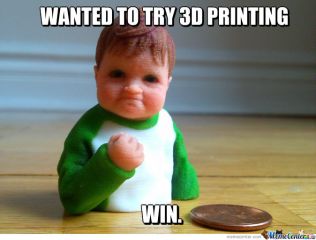Nixie Pixel on YouTube made a video in 2015 about how ‘Open Source 3D Printing Will Change the World’. In the video she demonstrated and explained the work of BQ, who want to make 3D printing available for the public.
This is an exciting venture by BQ, as regular citizens would have access to incredibly modern, innovative technology, where they can create anything from figurines to robots in the comfort of their own homes. However, is open source the best option?
Firstly let’s look at the difference between open and closed sources… Open source means the software code is freely available for anyone to redistribute and modify; whereas closed source is the opposite, i.e. the source code is not published.
If 3D printing was to be open source there would be:
- Freedom from restrictions as the original code is readily available and can be modified depending on your needs
- Unrestricted flexibility for users which results in innovative products, methods, solutions, etc.
- Continuos production means problems can be solved quickly, and new ideas formed
- Community centred and focused thus allowing for collaboration
These are all great reasons for 3D printing to be open source, however there are also some negatives if it were to be open source. Core DNA, an e-commerce/marketing platform argues that if 3D printing was to be closed source, although the initial costs would be higher, in return you would get “a more customised product from a trusted brand, higher levels of security and functionality, continuous innovation, greater scalability, ongoing training and support and a lower requirement for technical skills”.
3D printing has both positive and negative aspects, by being open source the community has limitless access to creating things, thus being innovative. However this is somewhat uncontrollable, and closed source allows for a more secure, reliable final product in the eyes of buyers and large companies.
Stay Curious,
Ruby


